
Edvard Munch was a Norwegian painter. His best known work, The Scream (1893), has become one of Western art's most iconic images.
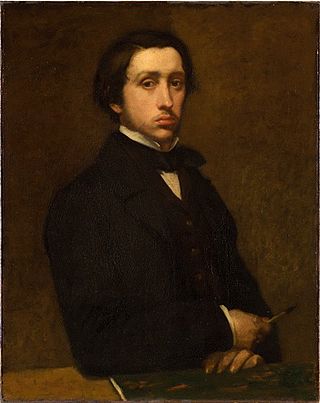
Edgar Degas was a French Impressionist artist famous for his pastel drawings and oil paintings.

The Scream is a composition created by Norwegian artist Edvard Munch in 1893. The Norwegian name of the piece is Skrik (Shriek), and the German title under which it was first exhibited is Der Schrei der Natur. The agonized face in the painting has become one of the most iconic images of art, seen as symbolizing the anxiety of the human condition. Munch's work, including The Scream, would go on to have a formative influence on the Expressionist movement.

Solomon "Sol" LeWitt was an American artist linked to various movements, including conceptual art and minimalism.
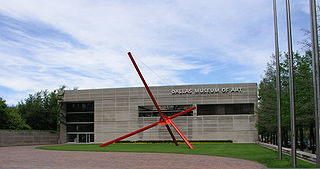
The Dallas Museum of Art (DMA) is an art museum located in the Arts District of downtown Dallas, Texas, along Woodall Rodgers Freeway between St. Paul and Harwood. In the 1970s, the museum moved from its previous location in Fair Park to the Arts District. The new building was designed by Edward Larrabee Barnes and John MY Lee Associates, the 2007 winner of the American Institute of Architects Gold Medal. The construction of the building spanned in stages over a decade.
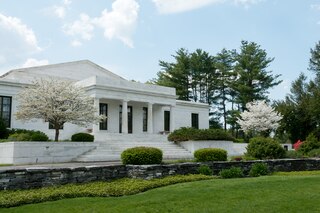
The Sterling and Francine Clark Art Institute, commonly referred to as the Clark, is an art museum and research institution located in Williamstown, Massachusetts, United States. Its collection consists of European and American paintings, sculpture, prints, drawings, photographs, and decorative arts from the fourteenth to the early twentieth century. The Clark, along with the Massachusetts Museum of Contemporary Art and the Williams College Museum of Art (WCMA), forms a trio of art museums in the Berkshires. The institute also serves as a center for research and higher learning. It is home to various research and academic programs, which include the Fellowship Program and the Williams College Graduate Program in the History of Art, as well as one of the most distinguished research libraries in the country, with more than 295,000 volumes in over 72 languages. The Clark is visited by 200,000 people a year.
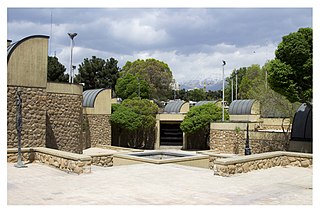
Tehran Museum of Contemporary Art,, also known as TMoCA, is among the largest art museums in Tehran and Iran. It has collections of more than 3,000 items that include 19th and 20th century's world-class European and American paintings, prints, drawings and sculptures. TMoCA also has one of the greatest collections of Iranian modern and contemporary art.

The Hamburger Kunsthalle is the art museum of the Free and Hanseatic City of Hamburg, Germany. It is one of the largest art museums in the country. The museum consists of three connected buildings, dating from 1869, 1921 (Kuppelsaal) and 1997, located in the Altstadt district between the Hauptbahnhof and the two Alster lakes.
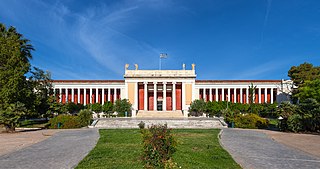
The National Archaeological Museum in Athens houses some of the most important artifacts from a variety of archaeological locations around Greece from prehistory to late antiquity. It is considered one of the greatest museums in the world and contains the richest collection of Greek Antiquity artifacts worldwide. It is situated in the Exarcheia area in central Athens between Epirus Street, Bouboulinas Street and Tositsas Street while its entrance is on the Patission Street adjacent to the historical building of the Athens Polytechnic university.
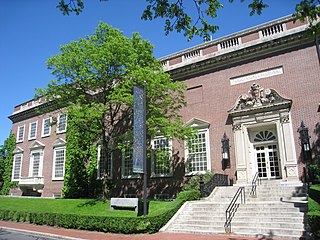
The Harvard Art Museums are part of Harvard University and comprise three museums: the Fogg Museum, the Busch-Reisinger Museum, and the Arthur M. Sackler Museum, and four research centers: the Archaeological Exploration of Sardis, the Center for the Technical Study of Modern Art, the Harvard Art Museums Archives, and the Straus Center for Conservation and Technical Studies. The three museums that constitute the Harvard Art Museums were initially integrated into a single institution under the name Harvard University Art Museums in 1983. The word "University" was dropped from the institutional name in 2008.

The Little Fourteen-Year-Old Dancer is a sculpture begun c. 1880 by Edgar Degas of a young student of the Paris Opera Ballet dance school, a Belgian named Marie van Goethem.
The "Sonderbund" — as it is normally called; its complete name being Sonderbund westdeutscher Kunstfreunde und Künstler, and also known as Sonderbund group — was a "special union" of artists and art lovers, established 1909 in Düsseldorf and dissolved in 1916. In its first years, the Sonderbund mounted some landmark exhibitions, successfully introducing French Impressionist, Post-Impressionist and Modern Art to the western parts of Germany.
The Thannhauser Galleries were established by the Thannhauser family in early 20th century Europe. Their cutting-edge exhibitions helped forge the reputations of many of the most important Modernist artists.

The M.T. Abraham Foundation is a non-profit art institution, which is part of the Israeli M.T. Abraham Group. Its headquarters are in Paris, France, and its collections are stored in Geneva, Switzerland. It was founded by the descendants of Mansur Tamir Abraham after his death in 1999. Its stated intent is promoting public appreciation for Russian and European Modernism, Impressionism, and Modern Art by collecting pieces that can be loaned "for the sole purpose of display and study by public institutions."

After the Bath, Woman Drying Herself is a pastel drawing by Edgar Degas, made between 1890 and 1895. Since 1959, it has been in the collection of the National Gallery, London. This work is one in a series of pastels and oils that Degas created depicting female nudes. Originally, Degas exhibited his works at Impressionist exhibitions in Paris, where he gained a loyal following.
Ian Dunlop is a Scottish writer and former art critic for the Evening Standard. His first book, The Shock of the New, about seven historic exhibitions of modern art, was published in 1972. It was followed by books on Van Gogh, and on the life and art of Edgar Degas (1979). He has also written books and articles on contemporary American and British art and has contributed reviews and art criticism to The Times, Studio International, Apollo, The Times Literary Supplement and The Spectator.
John B. Ravenal is an art historian, writer, and museum curator. Before 1998, he was the Associate Curator of 20th-Century Art at the Philadelphia Museum of Art. From 1998 to 2015 he was curator of contemporary art at the Virginia Museum of Fine Arts in Richmond, Virginia, where he organized exhibitions of Ryan McGinness: Studio Visit (2014); Xu Bing: Tobacco Project(2011), and Sally Mann: The Flesh and The Spirit (2010). He was curator of the VMFA's Jasper Johns and Edvard Munch exhibition, Jasper Johns and Edvard Munch: Love, Loss, and the Cycle of Life. His lecture about the exhibition took place in the Leslie Cheek Theater in the Virginia Museum of Fine Arts. The show opened in November 2016 in partnership with the Munch Museum in Oslo. He is the author of the exhibition catalogue Jasper Johns and Edvard Munch: Inspiration and Transformation.
Carol Armstrong is an American professor, art historian, art critic, and photographer. Armstrong teaches and writes about 19th-century French art, the history of photography, the history and practice of art criticism, feminist theory and women and gender representation in visual culture.
Ukrainian dancers is a theme series of pastels by Edgar Degas depicting Ukrainian women performing folk dances. Degas created these drawings during the 1890s and early 1900s, and was probably motivated by Ukrainian dancers performing in Paris at the time.













